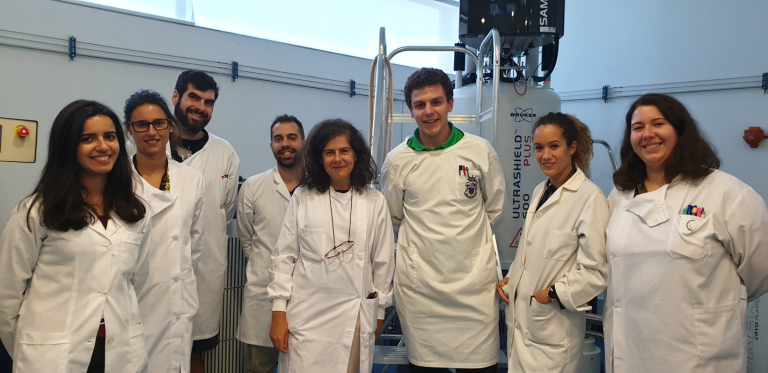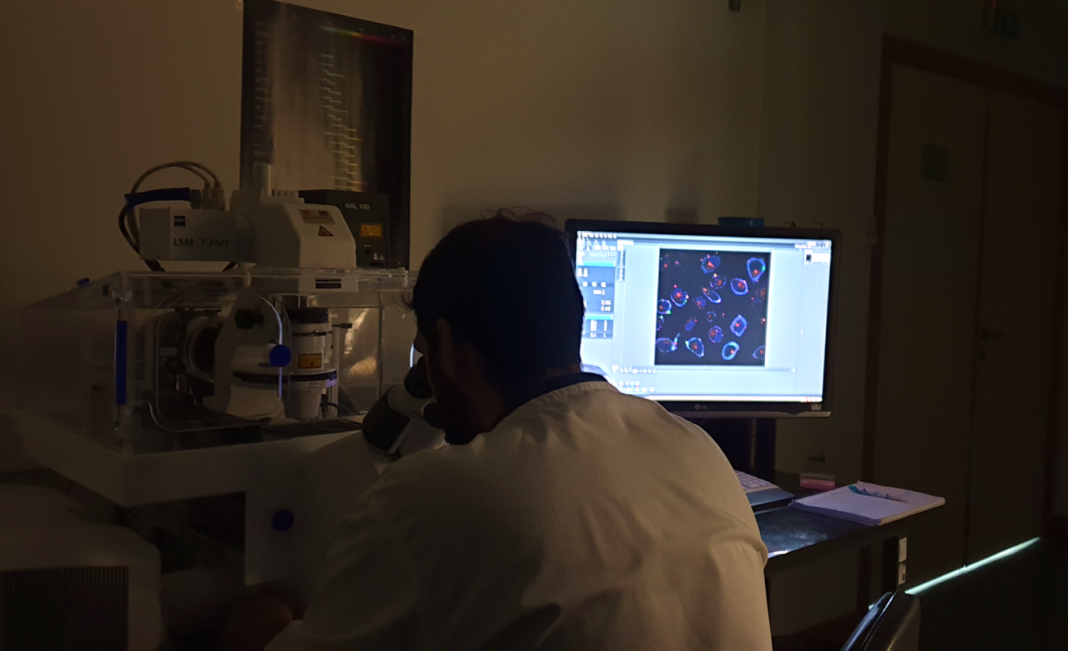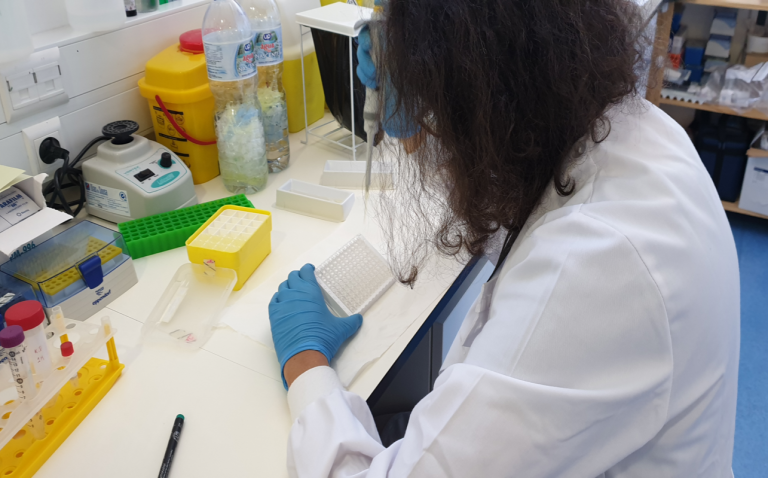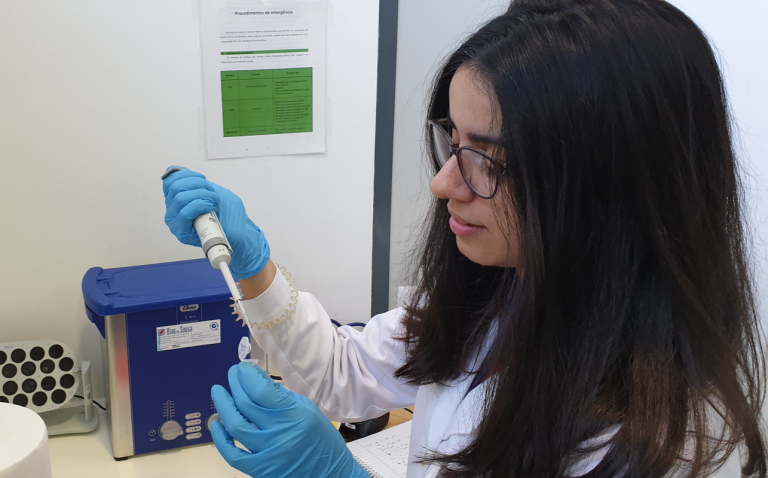The principal investigators of project DREAM are developing a different approach for HPV infection therapy, expecting to improve the effectiveness of patient treatment.
The exploratory research project DREAM, coordinated by Principal Investigators Carla Cruz (Faculty of Health Sciences of the University of Beira Interior) and Andrew Ellington (College of Natural Sciences, The University of Texas at Austin), consists of a vehicle-drug nanosystem capable of solving the lack of selectivity of the aptamers that intends to minimize the side effects of the anticancer drugs. This novel method, ultimately, hopes to prevent healthy tissues to be targeted by the toxins, delivering drugs to the dying cells only.
Recently, their work was recognized by the Portuguese Association for Cancer Research (ASPIC) and highlighted in its website. The investigators are committed to spread awareness about the work they are conducting, reinforcing the key role of their multidisciplinary team during this journey.
This month, we conducted an interview with Carla Cruz and Andrew Ellington, who are now starting “the in vivo stage of compound testing”, about their differentiating methodology and the direct effects of nanosystems on cancer patients and long-term cancer therapies.
The DREAM exploratory research project proposes a novel vehicle-drug nanosystem for HPV infection therapy. Can you explain to us the methodology involved and how it may differ from previous approaches?
The novel vehicle-drug nanosystem is based on aptamers, which are molecules that bind specifically to their targets. In our case, we use AS1411 derivatives that can bind to a protein that is overexpressed on the cancer cells’ surface, the nucleolin. Previously, it was demonstrated that these aptamers can selectively deliver anticancer ligands, but moderate concentrations and long incubations were required to observe cytotoxicity. To improve the toxicity and the selectivity of the aptamers, we conjugated them to gold nanoparticles. For the AS1411 aptamer it was demonstrated in previous reports that the gold nanoparticles were able to improve its efficacy, and we are now testing the effect of the same nanoparticles conjugated with AS1411 derivatives, to determine if we improve the properties of this aptamer as drug delivery systems. The best nanosystem will be used as an active compound in a topical formulation that can be applied in precancerous lesions caused by persistent HPV infections.
The need for an efficient treatment for patients with HPV still lingers. With this innovative research for the delivery of anticancer compounds, what is the expected impact on cancer patients and cancer therapies in the long run?
The majority of anticancer therapies lack selectivity and are toxic to malignant as well as to healthy tissues. Our nanosystem obviates this problem by targeting anticancer drugs. The AS1411 derivatives are selective for the nucleolin and can interfere with its oncogenic properties. In addition, these aptamers are able to efficiently deliver anticancer drugs to cancer cells. Finally, we anticipate that upon entry into the cell the nanoparticles will be able to escape the endosome, another limitation that is often seen with other advanced nucleic acid therapies. Therefore, the resulting nanosystem developed as a result of the DREAM project should be a selective therapy, decreasing the side effects of anticancer drugs.
How long do you think it will take to move your technology from the lab to the market?
Due to Pharma/Biotech regulations on the clinical approval of drugs (e.g. the FDA), the average time for a new drug to reach the market is between 8 and 12 years. Nevertheless, we hope that our technology will take part in clinical trials in the next 5 years as we are now entering the in vivo stage of compound testing. Currently, we are part of a COST Action dedicated to the translation of nanotechnology entitled “Cancer nanomedicine – from the bench to the bedside”, which may help in speeding up the clinical evaluation of our technology.
Research work carried out within the scope of the DREAM project, and whose team is led by Carla Cruz, was recently highlighted by the Portuguese Association for Cancer Research. This is fantastic news! What does this recognition mean to you?
It is good to feel that the work we develop is recognized in the field, it makes you believe that what you do really matters. Additionally, advertising our work may help in attracting further funding and collaboration opportunities as it brings the spotlight to the team and what we have put together. This highlight is also very important because it helps disseminate our work to a non-scientific audience, which is of the utmost importance as these are the persons that benefit the most from R&D results, i.e. the innovative technology aimed at treating a given disease.

This project involves a multidisciplinary team of researchers from the University of Beira Interior, the University of Austin at Texas, IST-ID, Labfit and Hospital Centre of Cova da Beira. Can you tell us more about the complementarity of skills, the different contributions assembled and the challenges of multidisciplinary work?
The project benefits from a multidisciplinary team, with researchers from two Portuguese laboratories (CICS-UBI and C2TN-IST), one public hospital (CHCB), one company (Labfit-HPRD) and one research laboratory from UT Austin (The Ellington Lab) with strong backgrounds in different complementary areas such as nanobiotechnology, biochemistry, medicinal chemistry, biology and medicine. The R&D teams will mainly focus on the development of drug delivery systems for cervical cancer, while CICS-UBI will further develop the systems based on their experience with G-quadruplex aptamers. The IST-ID team are experts in using radiopharmaceuticals with theranostic potential. And finally, the UT Austin team will study the problem of bioavailability inside cells. The participation of the hospital is essential not only to obtain human samples required to test the efficacy of our technology, but also because clinicians can help to develop a more targeted strategy suitable for the real needs of the patients. Finally, the company Labfit will enhance the economic value of our technology by developing and testing a prototype.
____________
The Exploratory Research Projects (ERP) are short-term exploratory scientific projects, funded by the Portuguese Foundation for Science and Technology (FCT), and proposed by teams of experts and researchers within the scope of the strategic areas of the UT Austin Portugal Program.



